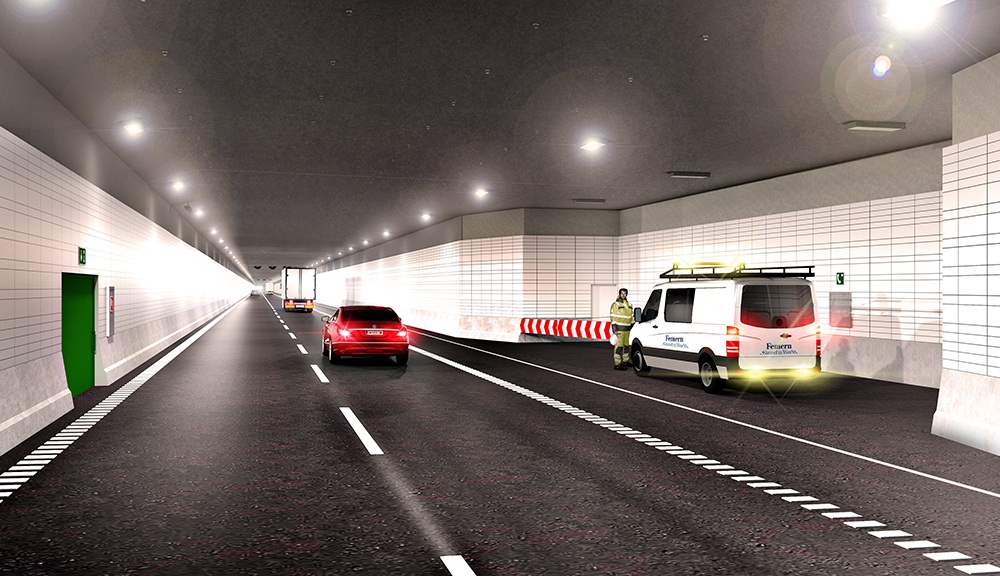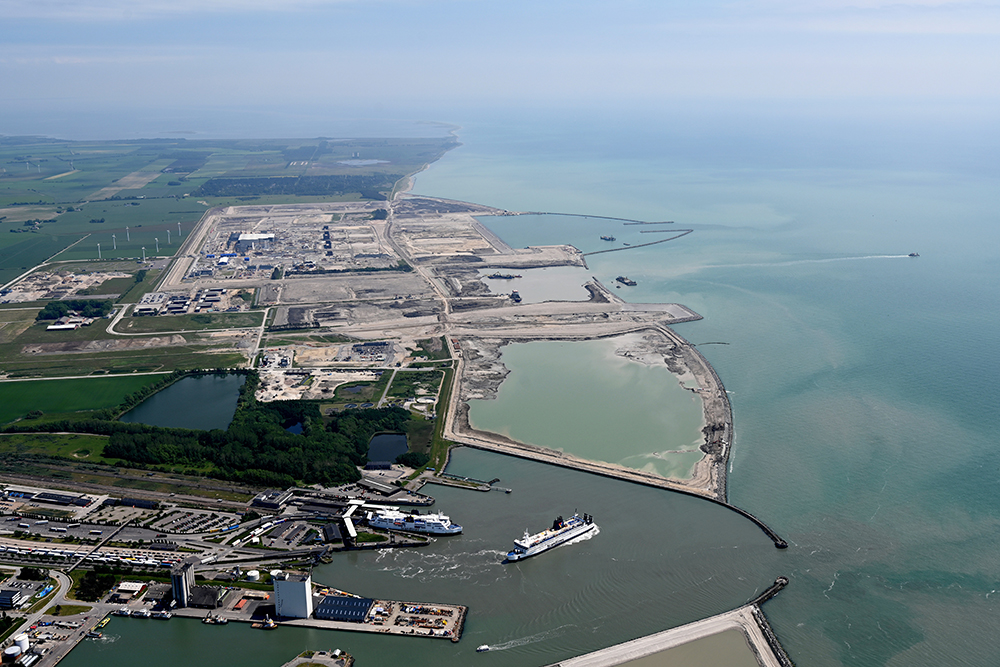
At 18km long, the Fehmarnbelt Tunnel is the biggest infrastructure project in Denmark and one of the most ambitious in Europe. When complete, it will also be the world’s longest immersed road and rail tunnel. The tunnel will connect Scandinavia and continental Europe through a so-called ‘green corridor’ that will reduce the travel time between Denmark and Germany to just seven minutes by train and 10 minutes by car.
The Danish client, Femern, recently awarded the Spanish consortium of Sice and its sister company Cobra IS (Industrial Services) - a renewable energy development business - the design and construction contract for all electro-mechanical installations in the tunnel – a deal worth around €530 million ($518.6 million). The contract places special emphasis on energy-efficient solutions and solutions that can adapt to future green technologies.
The Sice and Cobra contract is part of a total infrastructure project valued at more than €7.4 billion ($7.24 billion). The tunnel will connect northern Germany, especially Hamburg, with Denmark and Sweden, in particular the Danish capital Copenhagen and Sweden’s Malmö city.
“Winning Femern was a milestone for us,” says David Calero Monteagudo, head of Sice’s global ITS and tunnels business. “Last year was our 100th anniversary and now we have our biggest contract in the company’s 101-year history.”
Understandably, Sice has had to work hard for it. “We had to show them [the client] that we had the experience from past and ongoing projects,” he recalls. “Our work starts January 1 with two years for design, followed by four years for construction and implementation and then two years for maintenance,” said Monteagudo, speaking at the ITS World Congress in Los Angeles in September.
Leading-edge technology
The consortium’s work includes the design, supply, installation, testing, commissioning and maintenance of the electro-mechanical systems in the tunnel’s five tubes - two road, two for high-speed rail and one for services and maintenance. The scope of the contract includes all the technology behind the MEICA systems - mechanical, electrical, instrumentation and control and automation.
According to the consortium at the time of the award, the contract positions both Sice and Cobra at the leading edge of technology. Because the electro-mechanical systems work will be done over eight years, there is a need to “future-proof” the ITS tunnel systems, explains Monteagudo.

“We’ve had to put together a technology management plan that includes a panel of four or five experts who meet once a month or so to review the latest technical developments,” he says. “We have to show the client that they will have the latest technology when the tunnel finally opens. This means we will likely be installing systems that haven’t even been developed yet.”
One of the systems for which it is especially important to have up-to-date technology is emergency warnings. Fire, vehicle crashes and poor air quality can close down a tunnel for hours if not days or months, causing travel chaos for drivers as well as financial chaos for the tunnel owner. False alarms for these incidents can also be costly. “The client wants an extremely low false alarm rate, so low, in fact, that most systems don’t now have such a rate,” he says.
Two contracts in particular helped Sice win the Femern deal. One is its work in Australia on the WestConnex project; the other is on the Calle 30 project in Spanish capital Madrid. These were especially intricate and detailed non-linear projects, meaning each involved connecting a series of tunnels, with multiple exits and entrances for vehicles - creating a myriad of signalling and timing possibilities for all traffic systems.
Without downplaying the challenges of the Femern contract, Monteagudo noted that the Danish-German link is at least a linear project. There are effectively five tunnels running parallel the entire length of connected immersed sections. But there is ‘only’ one entrance and one exit for vehicles.
Logistical challenges
However, make no doubt, notes Monteagudo, the challenges for the Femern project will be many, with one of them being logistics. The site is actually very isolated, so getting equipment and systems there will be difficult. Then they are dealing with two cultures, Danish and German. Communications will have to be precise. But his own experiences dealing with cultures other than his own, Spanish, is extensive and impressive – he has the bona fides.
Sice and Cobra IS were for years part of the global Spanish infrastructure group ACS, but are now owned by global French group Vinci. Monteagude has been with Sice for 22 years and is now in Madrid in order to carry out the Femern contract. His CV includes seven years living in the US west coast city of Seattle where he was involved in setting up ITS for the Alaskan Way Tunnel, which took six years to complete.
The 2.7km-long bored tunnel is part of the Alaskan Way Viaduct Replacement Project named after a section of SR 99 (State Route 99), a street running along Seattle’s seafront. Part of the original was an ageing 3.2km viaduct that opened in 1953. The new Alaskan Way includes the tunnel almost directly beneath the old viaduct that was demolished. Burying the SR99 has freed up the waterfront area for major inner-city development.

Sice got to work on the Alaskan Way Tunnel through the Seattle Tunnel Partners, a joint venture of New York-based Dragados US (a subsidiary of Dragados, the construction division of Sice’s parent group at the time, ACS Group) and the general contractor Tutor Perini Corporation, based in California. Work involved installing and testing thousands of components and 90 interconnected systems. The tunnel opened in early 2019. The final tunnel construction bill came to $2 billion out of the overall project’s $3.2 billion.
A year after the tunnel opened, vehicle use topped one million trips monthly. The Washington State Department of Transportation said that since tolling started in November, 83% of drivers using the tunnel had a Good To Go! account, which means they pay the lowest toll possible - $2 less than having no pass or account. The tolls help pay back construction bonds and pay to keep the 3.2km tunnel running safely and smoothly, said the department.
It is early days for the Fehmarnbelt project. The tunnel will run from the Danish island of Lolland to the German island of Fehmarn, crossing the 18km-wide Fehmarn Belt (strait) in the Baltic Sea. It will consist of 79 standard 217m-long poured cement elements with 10 service elements of 85.7m in length. All the sections will be manufactured in a special factory from which they will be floated into the strait.
By May, the Dutch consortium Fehmarn Belt Contractors (FBC) had helped dredge half of the total amount of soil from the seabed to create the trench into which the sections will be lowered and connected.
Last summer work started on the tunnel’s Danish portal building, where train and road traffic will descend and drive through the 18km to Germany. The building of the tunnel portal on the German side of the fixed link, at Puttgarden on the German island Fehmarn, will start in 2023. Completion of the project is expected in 2029.
Madrid Calle 30
Sice developed the full integration of the Calle 30 tunnels for the Madrid Calle 30. This involved the remodelling of the roadway and land where the old M-30 used to run, following construction of more than 47km of tunnels.
The control centre coordinates and synchronises the installations and human resources. All of the Calle 30 installations are supervised and controlled from the control centre.
New sections of road totalled 99km, 56km of which is in tunnels. Construction started in September 2004 and was complete by the second quarter of 2007. The project came in just under €3.9 billion ($3.8 billion).
With a 13-month deadline, Sice’s work included construction of the main security control centre. There was also hardware control equipment and Sice Sidera's proprietary integral tunnel control software application for both this centre and the backup centre physically located in Madrid’s local government mobility area. The application developed by SICE monitors and controls over 400,000 signals - security systems, electromechanical installations, traffic, communications and lighting.





